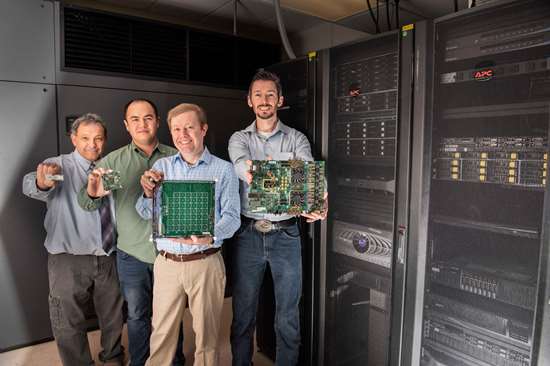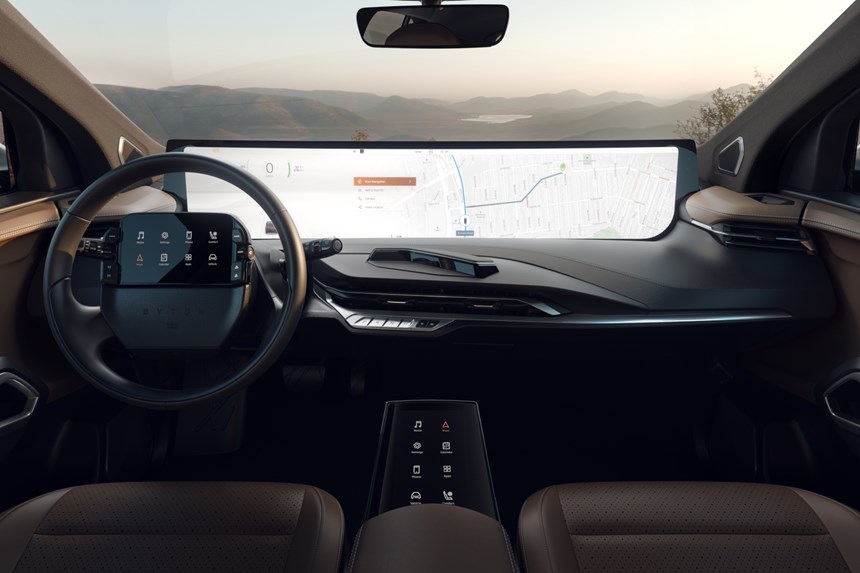Sandia’s Power Play on Neural Networking; Cool Tech, Cooling Substrates; Smart Wipers; Controlling a Big Dash
Sandia’s Power Play on Neural Networking; Cool Tech, Cooling Substrates; Smart Wipers; Controlling a Big Dash
#electronics
Sandia’s Power Play on Neural Networking
Whether its artificial intelligence or machine learning, the one thing they have in common is the fact that each is being patterned after the human brain: specifically its neural networks.
“Neuromorphic systems,” or computer chips devised as neural networks assembled into large groupings, mimic the human brain by sending electrical signals to neurons firing in no predictable order. By contrast, typical desktop computing favors more preset electronic processes that also happen to be more energy efficient. Therein lies the dilemma for innovators: Choose less sophisticated systems that save power, or more intelligent ones that hog it.
To work around this computing predicament, Sandia National Laboratories (sandia.gov) introduced Whetstone, a software tool that “sharpens” the output of artificial neurons. Sandia says this supplemental computer code, which essentially is added onto conventional software training programs, enables neural computer networks to process information up to a hundred times more efficiently than the current industry standard.
The developers of Whetstone say it greatly reduces the amount of circuitry required to perform autonomous tasks. As such, it could provide a path for more artificially intelligent applications in mobile phones, self-driving cars and automated image interpretation - without the high power load.
“Instead of sending out endless energy dribbles of information,” said Sandia neuroscientist Brad Aimone, “artificial neurons trained by Whetstone release energy in spikes, much like human neurons do.”
Sandia is seeking a patent on the open-source code, which was the subject of a recent technical article in Nature Machine Intelligence.
Cool Tech, Cooling Substrates
As demand for electric vehicles continues grow, so too will demand for substrates to house a slew of electronics components in vehicles. The more taxing the electrical load, the more demand there is to keep those electronics cool.
Heraeus Electronics (heraeus.com), which supplies semiconductor and electronic packaging industries, is partnering with Toshiba Materials (toshiba-tmat.co.jp) to jointly develop and produce metal ceramic substrates made of silicon nitride. The reason: those particular ceramic substrates have an edge over traditional metal substrates when it comes to managing and insulating parts in power modules. The companies see demand for reliable silicon nitride metal ceramic substrates increasing given the number of power modules in electric vehicles.
Recent forecasts seem to back that up. In 2017, the ceramic substrates market accounted for USD $6.40 billion in 2017 and is projected to grow by a 6.5% compounded annual growth rate from 2018 to 2025, according to a survey by Data Bridge Market Research.
Under the strategic partnership, Toshiba Materials will provide the metal ceramic substrates, which Heraeus Electronics will structure and finalize to meet customer specifications.
Smart Wipers, Smarter Infrastructure
As important a technology as radar is, it’s not as accurate as your windshield when it comes to showing precipitation in real time.
Operating a test fleet that roamed the city of Ann Arbor, engineers at the University of Michigan tracked when wipers were being used and matched it with video from onboard cameras to document rainfall. Researchers collected data from a set of 70 cars outfitted with sensors embedded in windshield wipers and dashboard cameras.
They found that tracking windshield wiper activity can provide faster, more accurate rainfall data than contemporary radar and rain gauging systems. Just as vehicle-to-vehicle data is helping avoid traffic snarls and improving navigation systems, a swarm of vehicles with wipers supplying real-time rain data could help provide more accurate forecasts, not to mention prevent flash-flooding or sewage overflows. The researchers posit that if the wiper data interfaced with “smart” stormwater systems—infrastructure outfitted with autonomous sensors and valves—municipalities could potentially take in data from connected vehicles to predict and prevent flooding.
“These vehicles offer us a way to get rainfall information at resolutions we’d not seen before,” said Branko Kerkez, U-M assistant professor of civil and environmental engineering. “It’s more precise than radar, and allows us fills gaps left by existing rain gage networks.”
Kerkez said the research team’s efforts could be a first step in creating a smart infrastructure system that is fed by and responds to data as it is collected from vehicles on the road.
“One day, when everything is connected, we’re going to see the benefits of this data collection at a system scale,” Kerkez said.
The research appears in Scientific Reports.
Small Gestures Controlling a Big Dash
Would-be drivers of the Byton M-Byte midsize SUV will gaze upon a 48-inch screen that literally stretches the length of the instrument panel. But the occupants of the electric vehicle, for which Byton aims to attain Level 3 autonomous capability, may not need to touch the IP all that much. Byton announced that pmdtechnologies ag (pmdtec.com), will supply the sensors for the in-car gesture control camera system that will command the panel.
The 3D time-of-flight sensors were jointly developed with Infineon Technologies (infineon.com), and are already found in smartphones, robots, virtual and augmented reality headsets , and soon, vehicles. The sensors are designed to let passengers use a hand gesture to answer a smartphone or select music, among other features.
“As cars get more and more functions, natural interactions are becoming an important tool to simplify the human-machine interface,” said Bernd Buxbaum, CEO of pmdtechnologies ag.
Headquartered in Nanjing, China, Byton, intends to launch its first EV production model near the end of 2019, which plans to have Level 4 autonomous driving capability in 2020.
RELATED CONTENT
-
On Electric Pickups, Flying Taxis, and Auto Industry Transformation
Ford goes for vertical integration, DENSO and Honeywell take to the skies, how suppliers feel about their customers, how vehicle customers feel about shopping, and insights from a software exec
-
Ford Simulates Gravity
Although virtual development tools are being used more and more, there are still some things that are done in the real world.
-
Solid Edge Brings Divergent Modeling Worlds Together
This new software suite allows the development of “beautiful models ready for production.” What more can you ask for?










